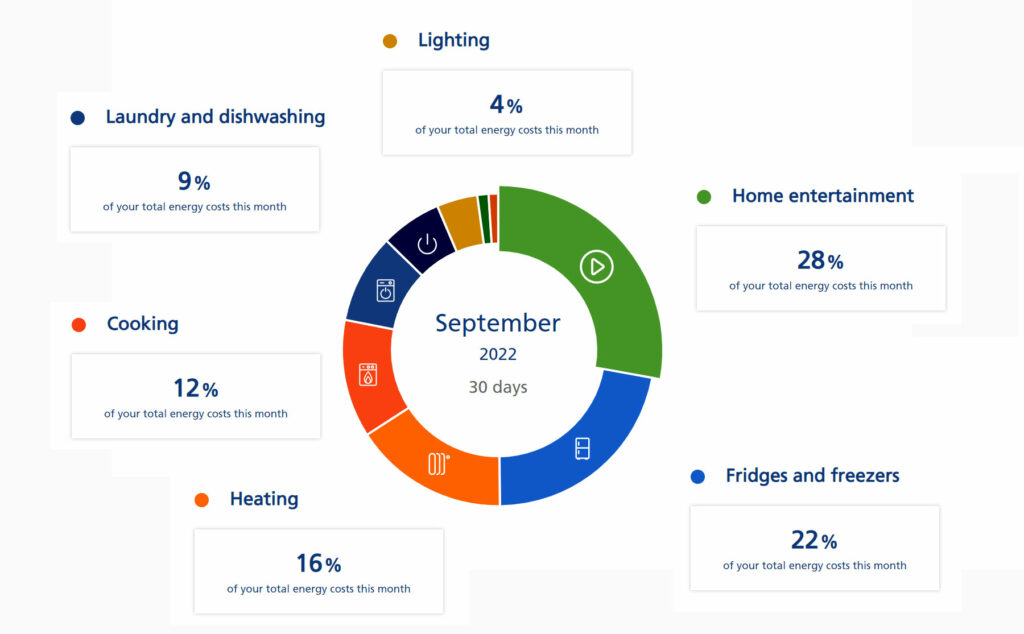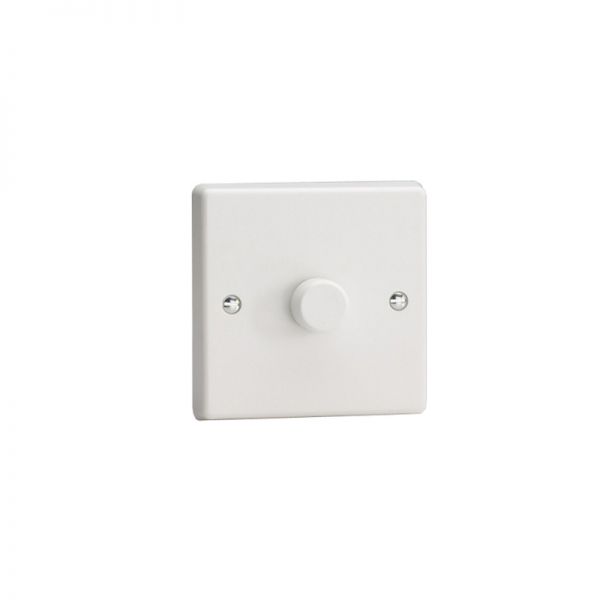Energy Efficiency – When Light & Heat Collide
Electricity prices have tripled in the past 3 years, increasing from 11 pence per kWh in 2020 to 34 pence in 2022. With more prices increases looking likely in April 2023 when the government energy price cap ends, now is a great time to reduce your consumption and become more energy efficient.
The table below shows just how much electricity costs have increased since 2020, if it increases to 45 pence per kWh in April 2023, that's a huge increase. Some homes will go from paying £3 per day to over £12 per day, equating to £4,380 per year, just for electricity. The price cap only effects what the maximum unit rate the energy companies are allowed to charge. While it talks about what your maximum annual costs will be, it's using the kWh rates to calculate it - the more you consume, the more you pay.
With EV (Electric Vehicles) increasing rapidly, this is going to put considerably more strain on the power grid which usually means further increases for the masses.

 This data was available from my energy suppliers' website (EDF) which I've found useful in my own quest for a more energy efficient home: a home where my energy bills don't cost as much as my mortgage. I've got electric heating and I was expecting that to consume considerably more than the fridge freezer and certainly more than home entertainment, but I was wrong.
This data was available from my energy suppliers' website (EDF) which I've found useful in my own quest for a more energy efficient home: a home where my energy bills don't cost as much as my mortgage. I've got electric heating and I was expecting that to consume considerably more than the fridge freezer and certainly more than home entertainment, but I was wrong.

Another quick win, in your energy efficiency quest is using dimmer switches. Did you know that just by installing a dimmer switch, you immediately reduce your light output by 10%? This is because a dimmer switch doesn't emit all of the light, even when its at full brightness your only getting 90% of the brightness. This also reduces stress on the light bulb and makes it last considerably longer, which is even more advantageous with LED light bulbs which cost more than halogen.
 If you've got dimmer switches throughout your property, you can easily adjust the brightness as you switch them on. Dimming your lights to 50% in the morning or 30% in the early evening times should give you enough light and improve your ambiance. Then as it gets darker, or when you need more light for certain tasks like cooking or playing board games you increase the brightness. Just make sure you're getting an LED compatible dimmer switch such as the Varilight V-Pro.
Some dimmer switches aren't capable of dimming LEDs and they'll cause a flickering effect, but the Varilight V-Pro is a good, cost effective solution. You can even replace a module in your existing dimmer switch with this retrofit Varilight V-Pro module. These modules allow you to match the same plate style as your other switches and sockets.
If you've got dimmer switches throughout your property, you can easily adjust the brightness as you switch them on. Dimming your lights to 50% in the morning or 30% in the early evening times should give you enough light and improve your ambiance. Then as it gets darker, or when you need more light for certain tasks like cooking or playing board games you increase the brightness. Just make sure you're getting an LED compatible dimmer switch such as the Varilight V-Pro.
Some dimmer switches aren't capable of dimming LEDs and they'll cause a flickering effect, but the Varilight V-Pro is a good, cost effective solution. You can even replace a module in your existing dimmer switch with this retrofit Varilight V-Pro module. These modules allow you to match the same plate style as your other switches and sockets.

Data taken from sample customer's EDF energy bills.
Energy Usage
While the costs of electricity are beyond your control, even that of our own UK government; your own energy consumption is well within your remit to control. If you aim at reducing your energy consumption by 20%, then this is a good starting point. Start by looking at your biggest energy consumers. Lighting accounts for around 15% of the overall costs in the average UK household, this will vary from consumer to consumer and reduce dramatically in summertime when you barely need to have the lights on. If you've not already made the switch to LED, then now is the perfect time. These days LED light bulbs cost very little and are 90% more energy efficient than halogen or incandescent which were banned in 2016. Taking a look at my own energy usage in September 2022, it didn't surprise me that my lighting consumption would account for less than the average consumer at just 4%. Something that did surprise me was my usage for home entertainment, shown below at 28%. This data was available from my energy suppliers' website (EDF) which I've found useful in my own quest for a more energy efficient home: a home where my energy bills don't cost as much as my mortgage. I've got electric heating and I was expecting that to consume considerably more than the fridge freezer and certainly more than home entertainment, but I was wrong.
This data was available from my energy suppliers' website (EDF) which I've found useful in my own quest for a more energy efficient home: a home where my energy bills don't cost as much as my mortgage. I've got electric heating and I was expecting that to consume considerably more than the fridge freezer and certainly more than home entertainment, but I was wrong.
Keeping Warm in the British Winter
In the cold, dark, dreaded British winter months when your heating is almost constantly on, you need to ensure that your house is well insulated, otherwise your expensive heat is going to escape through the walls and the loft. I'd recommend addressing this issue first as it's a very quick win. Even if your loft is insulated, are your rafters? After getting my rafters recently insulated I've noticed that my entire house is warmer, which means my heating can be reduced by at least 20%.Heating & Lighting don't Mix
If you are looking into insulating your loft and have recessed downlights, then you'll need to check whether they're insulation coverable. Most fire rated downlights from the early days with the black fire cans weren't designed to be covered with thermal insulation and it can pose a fire hazard if you do cover them, even if you've got cooler running LEDs. Modern integrated LED and GU10 downlights are insulation coverable as standard. Some are fitted with an insulation cover cap known as an ICC and some require an additional ICC. We have a useful accessory called the Loft Lid (shown below) which acts as a barrier between the downlight and the thermal insulation. This Loft Lid allows you to lay insulation on top of your downlights. We have more information about why to use loft caps for downlights here. Without properly insulating your downlights, warm air escapes through the ceiling void. Your cold loft pulls in the warm air from your room, its estimated that one Loft Lid can save £5 in heating costs per year.

 Energy Efficient Dimming
Energy Efficient Dimming
Another quick win, in your energy efficiency quest is using dimmer switches. Did you know that just by installing a dimmer switch, you immediately reduce your light output by 10%? This is because a dimmer switch doesn't emit all of the light, even when its at full brightness your only getting 90% of the brightness. This also reduces stress on the light bulb and makes it last considerably longer, which is even more advantageous with LED light bulbs which cost more than halogen.
 If you've got dimmer switches throughout your property, you can easily adjust the brightness as you switch them on. Dimming your lights to 50% in the morning or 30% in the early evening times should give you enough light and improve your ambiance. Then as it gets darker, or when you need more light for certain tasks like cooking or playing board games you increase the brightness. Just make sure you're getting an LED compatible dimmer switch such as the Varilight V-Pro.
Some dimmer switches aren't capable of dimming LEDs and they'll cause a flickering effect, but the Varilight V-Pro is a good, cost effective solution. You can even replace a module in your existing dimmer switch with this retrofit Varilight V-Pro module. These modules allow you to match the same plate style as your other switches and sockets.
If you've got dimmer switches throughout your property, you can easily adjust the brightness as you switch them on. Dimming your lights to 50% in the morning or 30% in the early evening times should give you enough light and improve your ambiance. Then as it gets darker, or when you need more light for certain tasks like cooking or playing board games you increase the brightness. Just make sure you're getting an LED compatible dimmer switch such as the Varilight V-Pro.
Some dimmer switches aren't capable of dimming LEDs and they'll cause a flickering effect, but the Varilight V-Pro is a good, cost effective solution. You can even replace a module in your existing dimmer switch with this retrofit Varilight V-Pro module. These modules allow you to match the same plate style as your other switches and sockets.



